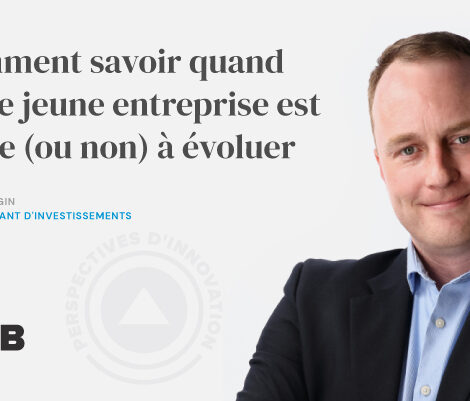- 14 décembre, 2009
- Capital de risque
- Comments : 0
Radian6 David Alston tells Vancouver Sun’s Gillian Shaw how to sell online using social media monito
How social media have globalized the shopping experience
The social Web changes the way we shop, as companies start to line up for customers
By Gillian Shaw, Vancouver Sun, December 13, 2009 | Link to original article
I was speculating out loud on Twitter recently about whether I should choose a hybrid as my next car.
Just minutes later, an offer to test-drive a GM Malibu hybrid landed in my inbox.
I’m a tech writer, not a car reviewer, so it’s not like GM was following me online just waiting to see if I was planning to write a story on car buying.
No, I popped up on GM’s online radar because I was a potential buyer talking about a product the company sells.
GM wasn’t waiting for me to walk into a dealership — it found me in my living room.
That’s a far cry from 10 years ago, when I thought it was the height of shopping convenience to sit in my living room and order presents online.
While some companies may still be simply arranging their goods on virtual shelves and hoping customers will show up, that concept is beginning to go the way of the old general store.
Instead, it’s as if the general store has come to us. Just like the old days, you can stand around chatting about what you’re looking to buy, listen to friends and neighbours talk about their recommendations, and maybe the store owner has saved a new scarf that just came in because he knows it’s your favourite colour.
“One of the things that is changing or has started to change is something that didn’t exist 10 years ago,” said David Alston, vice-president marketing and community of Radian6, a Vancouver social media company. “It’s the concept of companies lining up for customers, as opposed to customers lining up for companies, the idea of customers now being able to go out and express their needs, and companies listening and reaching out to see how they can help them.”
Social networks are making that possible, and corporations are turning to the networks with various degrees of dexterity, much like they reacted to the arrival of e-mail.
The early adopters were quick to capitalize, while others lagged, complained or dismissed it as a passing fad. If they did, they were passed by — at best, their e-mail inboxes filling up but remaining unanswered and, at worst, offering no e-mail address for their customers to contact them.
Social media is eliciting a similar response. From the dismissive, “I don’t want to know what people had for breakfast,” to the enthusiastic, like Dell Inc. selling millions of dollars worth of goods through Twitter alone.
Even as I write, WestJet assures a customer on Twitter that the company is looking out for his mom, retweeting this customer’s message: “Dear @WestJet please take extra good care of one of your psgrs today — my Mom. She’s flying from YVR to YWG this evening. Thank you! =)”
Establishing credibility
At a time when customer interaction can be mired in voicemail hell, it’s a shift that is winning over consumers who are flattered and delighted that companies are paying attention to what they are saying.
“In 2020 if we look back 10 years, we’ll be able to say, that’s when it started to happen,” said Alston. “Smart companies are the ones that started to treat customers that way.”
It’s a fundamental shift that is delivering power to networked communities and companies have to establish credibility with these communities — not just hope to entice business with glitzy ads.
“For the last 30 or 40 years it has been the church of the audience as opposed to the church of the community,” said Alston. “Community-based thinking means you have to look at all these users of your product out there as an investment.
“When you are investing in that person, you are connecting, you are conversing with them, you are sharing content. You are developing a relationship and it is an investment that hopefully will last a lifetime.”
Ironic then that companies are still calling us up with their consumer surveys. I want to say to them, “Don’t ask me to fit into your pre-determined survey box with a one to 10 answer. Simply listen to my needs, offer honest information and you’ll earn my loyalty.”
It’s a shift from “buying or renting eyes and ears” with traditional advertising to long-term interaction with customers.
Transformation for music industry
It’s also one that appears to have eluded the recording and movie industry, which spent much of the past decade fighting with music and movie fans in court.
That’s because technology not only affected where customers could buy, but what they’d buy and whether they had to buy at all or simply help themselves to music that was free for downloading.
In 2009, CD sales were only half of what they were in the 1990s. The music industry has seen customers turning to cheaper or free alternatives. Consumers didn’t stop loving the entertainment, but their relationship with the business behind it soured because the recording industry was taking single mothers and parents of downloading teens to court.
It was a course that doesn’t sit well with Terry McBride, chief executive and co-founder of Vancouver’s Nettwerk Music Group.
“The court cases have proven absolutely nothing,” he said. “They did not slow down any peer-to-peer file sharing. What it did was alienate the music business from its customers, give everyone a black eye and put a lot of money in the pockets of lawyers.
“You can’t legislate behaviour.”
McBride thinks downloads are on the way out, not because of the recording industry’s battle but rather because of new models like the digital valet.
Instead of loading down your computer, MP3 player or iPhone with thousands of tracks — many of which you may hardly listen to — services like Spotify deliver music how, where and when you like. And for a flat fee.
“A behavioural shift is beginning to happen,” said McBride. “It’s going to be quick and it’s going to be profound.
“Those digital valets, like Spotify and others, whatever they may be, will be the dominant way you access music.
“Owning all that stuff [music files] will become like clutter, you won’t need it.”
The very thought could cause palpitations in the music industry, but McBride believes that as such digital valet services begin to gain traction, the revenue will come to the industry.
The first two revenue models are the obvious ones, he says: A subscription model in which he believes perhaps
10 per cent of users would be willing to pay something like $10 for all the music they can use and in any way they want to use it; and the advertising or click-through model, which McBride expects will catch on in the next two years. The third model is one McBride said people are missing.
“The one that everyone is not seeing, which is the most valuable, is the data,” he said. “Look at Facebook, Twitter — their evaluations are based on their ability to track that data and sell that information to all the various search engines. That’s a huge value there.”
Proof of the shift and its viability is evident in the statistics, McBride said.
“In England and in Europe, peer-to-peer is going down,” he said. “In the U.K. the adoption rate is four million within one year — or eight per cent of the population.
“In North America that would be 30 million people in one year signing up — that’s a massive, massive change.”
McBride sees “a rather strong correlation,” between the growing popularity of a service like Spotify and the decline in file sharing.
“It continued to go up while they were suing everyone,” he said of the recording industry’s efforts to stem the flow of free music downloads. “Only when Spotify came along did it change.”
Spotify has been promised for the United States for some time, with the latest projections putting its arrival in the first quarter of 2010. But its arrival keeps being delayed.
“All of the rights holders are still locked in the 1990s mentality and can’t come to grips with this even as they see amazing data happening in other parts of the world to show this is the way to go,” said McBride.
Success stories
As the world has become our store it has also spawned new businesses that just a few years ago would have been dismissed as fanciful.
Consider Shaun Shienfield, named eBay Canada’s entrepreneur of the year. Who’d have thought you could make money selling people back the golf balls they lose on the course?
But Shienfield has not only made money doing this, his company Knetgolf.com sells 20 million golf balls a year retrieved from water hazards and other hiding spots with 30 per cent of his overall revenue coming from his eBay accounts.
Another eBay success story, Bryan Hellwig, overcame his remote location to tap into a global customer base for Inuit art, running a business from his home in Iqaluit, Nunavut.
With eBay Canada approaching its 10th anniversary in the spring and eBay, an e-commerce pioneer dating back to 1995, there are millions of active eBay users in this country.
“Canadians sell over a million items on eBay every month,” said Andrea Stairs, manager for eBay Canada. “EBay is now part of a multi-channel universe.”
Professor Izak Benbasat, Canada Research Chair at the University of British Columbia’s Sauder School of Business, said as we come to see the world as our marketplace with e-commerce, it also delivers experiences we wouldn’t necessarily get shopping at bricks-and-mortar stores.
“One is product recommendations,” he said. “You enter your interests and your needs about a certain product and you will get advice.”
Social shopping is a progression that comes from the social Web.
“In e-commerce, I can sit in front of my computer and look at products from all over the world — but what about the enjoyment of being in a store with a friend or relative?” Benbasat asked.
While it may not be the same as having your girlfriends crowd into the change room to offer opinions on your wardrobe, the social Web offers its own virtual version.
“Facebook Connect or Google Wave, these kind of software mechanisms allow you to communicate and collaborate with other people during your shopping process,” Benbasat said.


